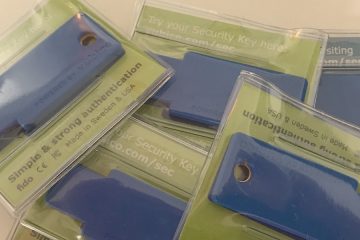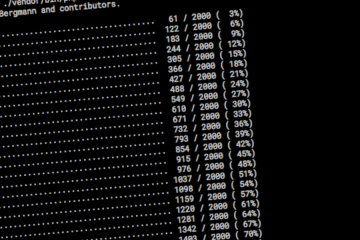These are some lessons I learned while working from home for a year in total self-isolation during the COVID-19 pandemic between March 2020 and March 2021.
It was a rollercoaster with lots of ups and downs. We learned from our mistakes and were able to move forward, adjusting to whatever curveball this pandemic has thrown our way. I’d love to share my story with you.
COVID-19, the pandemic that impacts all of us for more then a year. A year ago I wrote how mandatory work from home would not have a major impact in our daily operations. It turns out I was too optimistic and mandatory self-isolation does has an effect on how we work as a virtual team.
Running a business

It is hard to run a business, no matter the size or industry. But running a business during a pandemic outbreak that lasts for many months is making the challenge even harder.
In the beginning we had clients postponing their projects because of other priorities created by the shift from office to home. Later on projects got cancelled because clients were uncertain about their future. Near the end of 2020 we also learned that some customers had to close their books unfortunately.
It is devastating to learn that clients, especially those with whom we had years long relations with, no longer exists. For us it was not just a headline in the news, these were people we interacted with. Learning that they no longer had a job and could provide for their families was devastating. Where possible we got their developers new positions with other organisations or we got them in touch with really good recruiters who we could trust finding them a good job fast.
We also had customers who were facing cash-flow issues because their clients weren’t able to pay the bills. With these clients we were able to offer spread payment plans so we could help them recover. And this strategy worked really well for a number of our customers. They got back on their feet and were able to grow again. And when customers succeed, we succeed as well.
My key lesson in all of this was that without customers you have no business. If you have the ability to help your customers by postponing or spreading the payment of bills or you can enable your network to help them getting through a rough time, do not hesitate to step up.
Your team

When you sit by yourself in your home office every day of the week, you might not feel like your part of a team. And this is something that is not solved by all the available communication tools that exists today. Being part of a team requires that in-person approach where you can work together but also have fun together. Having lunch together or a drink after work are examples of those team building moments where you can relate with co-workers on other things than work. With the pandemic where everyone sits at home, you loose all of this.
I’ve tried a few ideas to get this dynamic back, but without the in-person experience they are enjoyable moments but nothing more. Here are a few ideas we tried:
- Pizza delivery for lunch
- Distributing snack packs
- Virtual board game night
- Daily open office hours
- Remote office equipment
Even though the concepts looked great on paper, the execution of it was a logistic nightmare and a very privacy invasive idea: I now had to ask my team members about their dietary preferences which I should not need to know.
Lunch challenges
Pizza delivery was not yet up to speed with the whole “everyone is at a different location” concept. I expected that when I order pizzas with a well known international brand, I could have them distribute the pizzas in the many different locations where my team members are located. This only worked when I issued vouchers for the pizza chain so they could order their pizza locally themselves while I paid the vouchers. Not entirely what I had in mind, but it got the job done and my team mates some pizza.
Snack packs
Snack packs were one of the first things that were available as a solution for remote teams. Companies like Orbitbox from Luxembourg and Foodinthebox from Spain are two examples of the numerous startups that have filled this void and are providing quality services. If you want to offer your remote team members their own choice of food while you keep control over budget, maybe Takeaway Pay might be an interesting solution.
Team leisure
I also discovered that playing board games with your remote coworkers is also a lot of fun. It requires that each player has the same board game in front of them, play for themselves and other players, but once the first awkward trials have succeeded, you can have almost the same fun level as playing on a single board in the same room.
Open office hours
Early in the pandemic I have set aside an half hour each day for a so called open office. This means that I am available to everyone to join an online call with me to talk about everything except work. And it’s not just for my team, but for everyone on the internet. Through this way I learned more about board games, got great ideas to do with my kids and I was able to help other internet entrepreneurs with advice or just different points of view.
Tools & equipment
Something that seems obvious is to give your coworkers are tools they need to be the best they can be. Sometimes it is investing in ergonomic furniture, but most of the time it’s providing them useful items they can use for remote collaboration like Yubico Security Keys, a detachable webcam, ergonomic wireless keyboard and mouse, a good microphone, a noise cancelling wireless headset, an additional screen, or a combination of them.
My biggest learning was that a good team is the backbone of your company’s existence. You don’t need to tell them what to do, but you need to support them in doing the things they do best. And look for ways to unite everyone beyond the scope of work. Sometimes it is food, snacks, or drinks. Other times it’s all about doing fun things together remotely.
Mental health and work/life balance

This pandemic has had a huge impact on many people, especially on their mental health. Not everyone is a remote worker or can work in isolation for such a long period. Identify those people and arrange with them to come to the office once or twice each week so they feel less isolated. This is not always easy or convenient, especially when there’s a national or regional lock-down enforced, but still manageable.
If you don’t have the facilities to offer a safe working environment with plenty of ventilation and social distancing areas, an option could be to take a company subscription with a co-working space nearby. These facilities were already available in cities, but recently we see them also appearing in rural areas.
Calendars and time
Make it clear to everyone in your team that it is ok to spread work throughout the day while having moments with family in-between. And yes, sometimes during a video call a child walks in or a pet jumps on the desk. That is what working from home is all about.
In my search to manage my time with others I discovered Koalendar for planning appointments. This service allowed me to manage my calendar for personal and work time while it allowed others to book meetings with me in my available time that was left. Not only does it support individual schedules but is also great for team calendars.
Work space
The most difficult challenge in balancing work and life is to prevent it flowing into each other. The most important advice here is to have a separate space to work. This is not convenient, especially for people living in small apartments or in studios. A desk and removable room dividers like the IKEA EILIF Screen system can turn any space into an office. It is the mental barrier people have to cross when they are working or when they are spending personal time. We have seen that working from the couch, the bed or in the kitchen is not an option.
Let your coworkers set their own working hours! Let them decide for themselves what good hours are for them to balance work and life. In Google Workplace people can set their own working hours, while in Microsoft Office 356 the settings are not as fine grained.
Training and certifications

This pandemic also provides opportunities in the form of online training courses, education programs and certifications. I have set aside a few hours each week for online training courses using LinkedIn Learning, Pluralsight, Microsoft Learn, and even Full Time Filmmaker.
By keeping my skills up and my knowledge refreshed, I know I will be better prepared helping clients with their complex challenges. And having certifications to prove to myself I’m actually mastering that knowledge is only a bonus.
It seems obvious but I learned a lot more by preparing for a certification. I discovered new ideas, new concepts, and better ways of doing the things I do on a daily basis.
Community work

I started noticing a decline in community activity when COVID-19 raged throughout the world. At first mayor conferences got cancelled, but also smaller community meetups got cancelled too. Together with the PHPBenelux crew, I started hosting monthly virtual PHP community meetups. Our first challenge was how we could come together, have presentations and do a prize raffles. After going through a lot of online conference services we ended up with ClickMeeting. It’s an intuitive platform with features we were looking for like screen sharing, Q&A, live streams, and breakout rooms.
We started with a hybrid meetup approach. A meeting room, two crew members and our speakers. The crew managed the session while being live audience. Unfortunately the pandemic required more stricter regulations and we had to abandon this concept at the end of 2020. We continue every month while experimenting with new ideas and concepts to make things interesting for our audience.
What I’ve learned is that you need to step up and bring people together in an easy, accessible way. During this pandemic people lost touch with each other and with our monthly meetups I got everyone back together. It is still a huge difference from the in-person events, but it works.
Bringing people together and enabling communities is so rewarding, I can recommend it to everyone.
Next steps
I don’t know what the future will bring us. Time will tell if we can beat this pandemic. Maybe we have to face other challenges. I don’t have answers to those questions. But I am certain that doing good will meet good eventually and I will keep on doing good.
References
Here are some other resources that reflect the impact of COVID-19 on businesses. They offer some different points of view that might be of interest to you:


